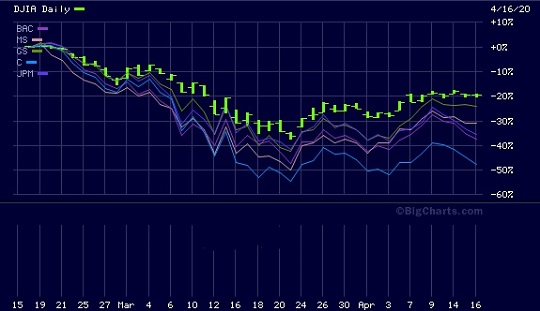The military industry, which includes companies producing weapons, defense systems, and related services, is experiencing significant growth. Increased defense spending by governments worldwide is driving this expansion.
As countries aim to protect their interests and strengthen armed forces, investments in military technology and equipment continue to rise. Advancements in technology have revolutionized warfare, with the development of drones, precision-guided missiles, and cyber warfare tools.
The industry also provides comprehensive defense solutions such as intelligence systems and logistical support. Defense contracts create job opportunities and foster economic growth. Strict regulations ensure compliance with international law and ethical standards in arms exports.
Overall, the military industry plays a crucial role in national security and global stability.
Definition and Explanation of Military Industry Stocks
Military industry stocks are shares or equities issued by companies operating within the defense sector. Investing in these stocks allows individuals to own a portion of these companies’ assets and potentially benefit from their growth and profitability. These stocks can be publicly traded on stock exchanges or accessed through private placements.
It is important to consider geopolitical events, government contracts, and regulatory factors before making investment decisions in this sector. Thorough research and analysis of individual companies are essential for successful investing in military industry stocks.
Overview of Key Players in the Industry and Their Market Performance
The defense sector is dominated by leading names like Lockheed Martin, Boeing, Northrop Grumman, and General Dynamics. These companies consistently demonstrate strong market performance due to their extensive portfolios encompassing diverse defense products and services.
Lockheed Martin is a global leader in aerospace technology, specializing in advanced systems such as aircraft and missiles. Boeing is renowned for its commercial aviation as well as military aircraft and advanced communication technologies.
Northrop Grumman excels in advanced electronics and cyber intelligence, while General Dynamics offers comprehensive solutions across land systems, marine vessels, and IT services.
These key players consistently deliver high-quality products that ensure national security, showcasing their resilience even amidst challenging times. Their market success can be attributed to their ability to anticipate customer needs and adapt to changing dynamics within the industry.
Factors Influencing the Growth and Profitability of Military Industry Stocks
Several factors contribute to the growth and profitability of military industry stocks. Consistent demand for defense products and services ensures a stable customer base, while lucrative government contracts provide stability and revenue potential.
Technological advancements drive long-term growth, creating opportunities for investors seeking long-term potential. Additionally, geopolitical developments and global economic conditions impact the performance of military stocks. Evaluating these factors is crucial before making investment decisions.
| Factors Influencing Growth and Profitability of Military Industry Stocks |
|---|
| 1. Consistent demand for defense products and services |
| 2. Lucrative government contracts |
| 3. Technological advancements |
| 4. Geopolitical developments |
| 5. Global economic conditions |
Pros of Investing in Military Industry Stocks
Investing in military industry stocks offers several advantages. First, there is consistent demand for defense products and services worldwide, ensuring a steady market regardless of economic conditions. Second, defense companies often secure substantial government contracts that provide stability and predictable revenue streams.
Finally, technological advancements drive long-term growth opportunities within the military sector. These factors make investing in military industry stocks an appealing option for investors seeking reliable returns.
Cons of Investing in Military Industry Stocks
Investing in military industry stocks has its drawbacks. Political and regulatory risks, ethical concerns, and volatility influenced by geopolitical tensions are key considerations for potential investors.
Political and regulatory risks stem from defense spending decisions, which can be subject to geopolitical factors and government policies. Changes in political landscapes or reductions in defense spending can negatively impact stock performance.
Ethical concerns arise from supporting companies involved in warfare or conflicts when investing in military industry stocks. This may conflict with personal beliefs or social responsibility concerns, deterring some investors.
Geopolitical tensions can lead to increased market volatility within the military industry. Sudden escalations in conflicts or shifts in international relations can significantly affect stock prices, making it challenging for investors to navigate the market effectively.
Considering these cons is crucial for individuals seeking to make informed investment decisions that align with their values and risk tolerance levels.
Researching and Understanding Individual Companies within the Sector
Researching individual companies in the sector involves analyzing financial statements, earnings reports, and market trends. This includes studying a company’s balance sheets, income statements, and cash flow statements to assess its financial health.
Examining earnings reports helps understand its profitability and performance, while monitoring market trends provides insights into industry dynamics. Additionally, evaluating company management, reputation, and competitive advantages is crucial for gauging long-term potential.
By conducting thorough research across these areas, investors can make informed decisions in this dynamic sector.
| Aspects | Description |
|---|---|
| Financial Statements | Analyzing balance sheets, income statements, cash flow statements |
| Earnings Reports | Studying profitability and performance over time |
| Market Trends | Monitoring industry landscape for insights |
| Company Management | Assessing leadership quality and track record |
| Reputation | Evaluating industry perception of the company |
| Competitive Advantages | Identifying unique strengths that set the company apart |
Diversification Strategies for Reducing Risk
To minimize risk in the military industry, investors can employ diversification strategies. By spreading investments across different sub-sectors like aerospace, cybersecurity, or naval systems, they can reduce exposure to specific risks associated with individual companies or segments.
Exploring alternative investments in related industries such as technology companies developing defense-related software or manufacturing firms supplying components to defense contractors further contributes to risk reduction. These strategies help create a more balanced and resilient portfolio within the military sector.
[lyte id=’pdNw89pBaWM’]





